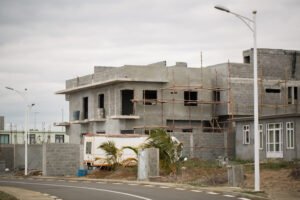Every house is incomplete without curtains, blinds or drapes. Curtain or blinds not only adds style to the interior of the house but also stops the sun light from entering the room directly. They also maintain the privacy by covering the windows. Curtains are available in different sizes and material. They can start from the top of the window and go down till they touch the floor or an inch or two above the floor. We consider curtains and drapes as similar but there is a small difference in both of them. In this article we will be discussing the different types of curtain tops, hooks and loop.
Curtains:
Curtain can be of different lengths for instance they can be small enough to just cover a window or full length till the floor and are made of lightweight fabric such as cotton or linen. Drapes on the other hand are full length from the top of the window till the floor. Drapes are made of heavy and thick fabric like velvet, silk or organza to block sunlight from entering the room. Therefore it is important to choose the right type for drape or curtain that best suits your interior theme.
-
Grommet curtains
Grommet curtain is the most common types of curtain used in the rooms. These curtains are more casual and simple and have silver rings on the top that goes in the rod for easy movement in opening and closing. These curtains are made from medium or lightweight fabric.
-
Rod pocket curtains:
Rod pocket curtain is sewn across the top of the curtain panel for the rod to cross from it or be inserted. Rod pocket curtains are also known as casement curtains. Rod pocket are similar to grommet curtains as they are also made from lightweight fabric and gives a casual look.
-
Tab Top Curtains:
Tab top curtains have loops on the top of them for the rod to go in from. These curtains do not move very easily as the loops don’t move from their place. Therefore these types of curtains are best for the rooms or windows that are not used very often or are not opened on regular basis.
-
Pleated Drapes:
Pleated draped are more classic and formal. These drapes give more of a formal look to the whole interior of the room or the windows. The pleats are formed by a header tape that is sewn at the back of the curtain to form pleats. After the pleats are formed, they are then hung with the help of hanging hooks on the rings. These rings then go in the rod for them to move back and forth easily. As drapes are made of heavy fabric these pleats give a nice formal look forming a nice flow to the whole drape.
-
Pinch pleat drapes:
Pinch drape is a series of single double or triple pleats that are pinched in the center forming a fan above and below the pinch. This is the most common types of drapes used in our house hold usually in the drawing and dining area.
-
Pencil pleat drapes:
Pencil pleat drapes are thin single pleats that are made in neat and tight folds. These pencil pleat drapes are commonly used in bedrooms and sometimes in bathrooms to cover the window and also to cover the bathtub.
Pelmets and Valances:
Pelmets are used to make the curtain wall look more attractive and hide curtain fixtures on the top of the window. These types of drapes or curtains were widely used before but have been replaced by more compact and smaller topped drapes and curtains in the bedrooms. However pelmets and valances are widely used in formal areas such as drawing rooms and dining rooms.
These were the types of curtains and drapes that are being used in houses. It is important to know the types of curtains and drapes to make the interior of the bedrooms, drawing rooms, dining rooms and even the TV lounges look better. Curtains don’t only cover the windows but are an important interior factor that affects the ambiance of the house.
Calculation for a 7ft x 7ft standard double layered curtain:
Double layered curtain
Layer 1 BLIND:
Velvet Fabric required:
6 meters if fabric roll is 1.5 meter wide
Market price per meter (Rs 450/- to 600/- per meter)
For Calculation lets consider Price of Rs 500/- meter
6 meter x 500 = Rs 3000 /-
OR
3 meters if fabric roll is 3 meter wide
Market price per meter (Rs 850/- to 1000/- per meter)
For Calculation lets consider Price of Rs 900/- meter
3 meter x 900 = Rs 2700 /-
Motive On Blind:
Laser Cut price range: Rs 1500/- to 2500/-
Hand made price range: Rs 4000/- to 5000/-
OR
Viscose Fabric:
Market price per meter (Rs 600/- to 1200/- per meter)
For Calculation lets consider Price of Rs 1000/- meter
6 meter x 1000 = Rs 6000 /-
Note: Motive cannot be made on Viscose as it is designed fabric.
Layer 2 Curtain:
Palachhi Fabric required:
7 meters if fabric roll is 3 meter wide (Palachi only available in 3 meter wide)
Market price per meter (Rs 450/- to 800/- per meter)
For Calculation lets consider Price of Rs 500/- meter
7 meter x 500 = Rs 3500 /-
OR
Shafoon/organza Fabric required:
7 meters if fabric roll is 3 meter wide(Only 3 meter wide available)
Market price per meter (Rs 450/- to 800/- per meter)
For Calculation lets consider Price of Rs 500/- meter
7 meter x 500 = Rs 3500 /-
Other items/hardware required:
Stainless steel rod 8 ft Rs 500
Brackets Rs 200
Rings or rail Rs 100
Belt pair Rs 500
Belt hook Rs 200
Total Rs 1500
Labor for curtain stitching and fixing:
Rs 75 to 100 /sqft
Total sqfts in 7 ft x 7 ft curtain = 7 x 7 = 49 sqft
Total labor cost = 49 x 100 Rs = 4900 Rs
Cost Summary:
Layer 1 Blind in velvet Rs 3000
Motive laser cut printed Rs 2500
Layer 2 Curtain in Palachi Rs 3500
Hardware & other items Rs 1500
Labor for stitching & fixing Rs 4900
Total cost of double layered 7 ft x 7ft curtain = Rs 15400/-




